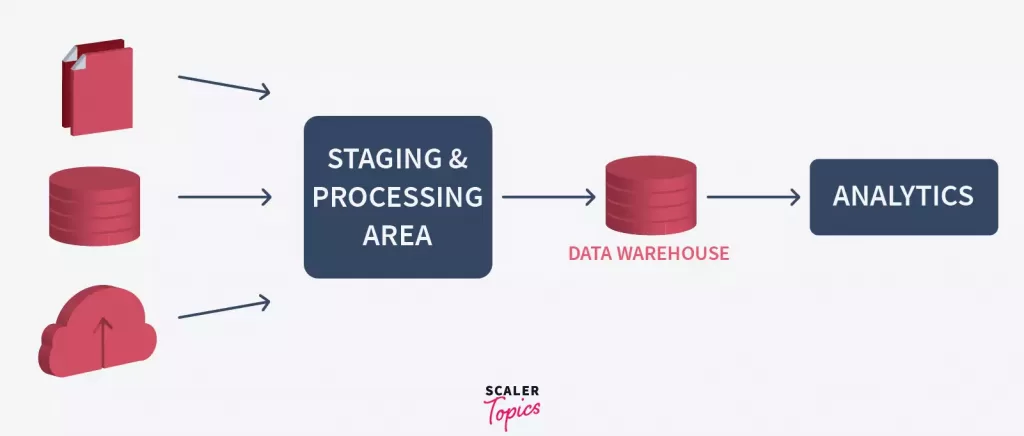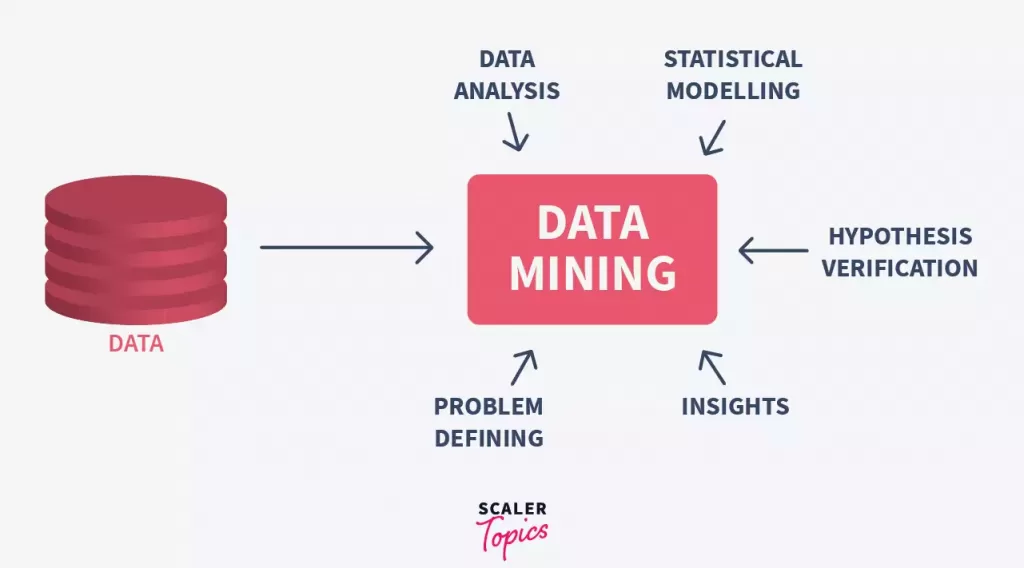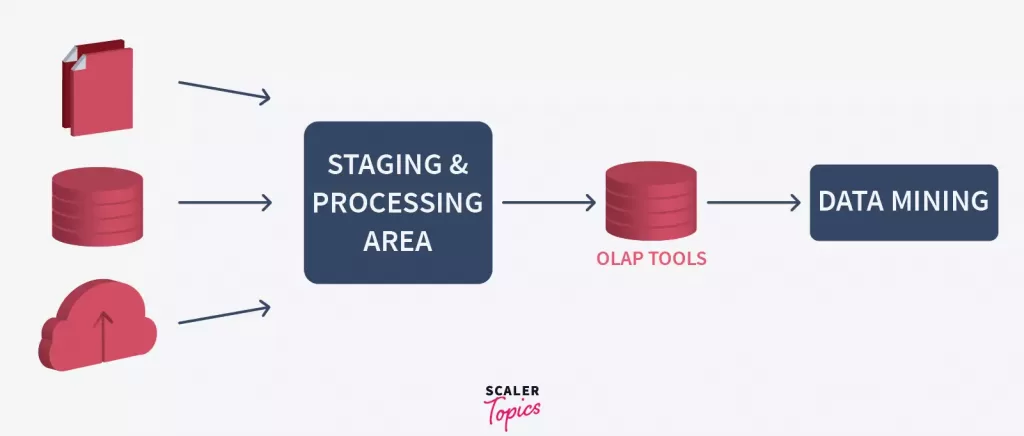Difference between Data Warehousing and Data Mining
Data, often dubbed ‘the new oil,’ powers diverse global systems, as coined by British Mathematician and Data Scientist Clive Humby. From personal online interactions to entertainment choices, data generated by billions influences modern life. In 2020, each person contributed 1.7 MB/s, illustrating the data’s enormity. Structuring this seemingly chaotic data enables businesses to tailor products, yielding success. The challenge lies in harnessing this immense data volume. The initial step involves Data Warehousing—compiling structured/unstructured data into an organized database. Once organized, Data Mining extracts vital insights, enabling informed decisions. Data Warehousing and Data Mining constitute powerful tools for navigating this data-driven landscape. There is also a difference between data mining and data warehousing.
Data Warehousing
The term “warehouse” in Data Warehousing has been derived from the more popular goods warehouses involved in logistics. In logistics, warehouses (or distribution centers) are large buildings where the goods are brought in from different sources, properly cataloged, and accounted for, before being shipped.
 Data warehouses tend to work on the same principle of aggregation from various sources. It can be defined as an environment that allows data to be brought in and combined from various sources and stored under a single relational schema. Data warehousing solutions comprise a set of analytical tools that allow this stored data to be queried in order to derive insights and hidden trends that eventually drive business decisions that empower everything ranging from businesses, and stock markets to healthcare, etc.
Data warehouses tend to work on the same principle of aggregation from various sources. It can be defined as an environment that allows data to be brought in and combined from various sources and stored under a single relational schema. Data warehousing solutions comprise a set of analytical tools that allow this stored data to be queried in order to derive insights and hidden trends that eventually drive business decisions that empower everything ranging from businesses, and stock markets to healthcare, etc.
At first glance, a data warehouse might seem like just a large database. However, a key distinction between a data warehouse and a database is that while a database focuses more on transactional (CRUD) operations, data warehouses are more analytics-oriented, wherein the primary focus is knowledge discovery— performing trend analysis and analytical modeling, classifications, clustering, etc. to extract useful information out of the data.
 Now that we have established an understanding of what data warehouses are, let us have a look at some of their distinct features.
Now that we have established an understanding of what data warehouses are, let us have a look at some of their distinct features.
Features of Data Warehousing
The following are the key features of a data warehouse:
- Subject Oriented: Data warehouses are subject-oriented. This implies that the in-built data analytics and modeling tools help extract subject-based information out of the stored data. From the business point of view, this subject can be the businesses’ customers, their sales records, products, etc. Analytics of data at such a huge scale can earn businesses some crucial insights.
- Time-Variant: The analytics provided over the data in a data warehouse pertains to certain time periods. Owing to their efficiency at storing and analyzing data, data warehouses are primarily used to store historical data, i.e., data collected over a long span of time. This allows trend analysis of data stored over different time periods. These time periods can range from a few days to even decades. For instance, trends observed in data from 2018 might differ from those obtained in 2021.
- Integrated: Data warehouses aggregate data from multiple heterogeneous sources, such as multiple relational databases, text files, etc. This heterogeneous data is then processed and compiled into single data storage.
- Non-Volatile: Data warehouses are used for the storage and analysis of historical data. By principle, data once stored persists in the data warehouse and cannot be deleted/changed over time. These features make data warehouses the ideal option for storing huge amounts of data. Now, let’s understand some of the advantages of data warehousing.
Advantages of Data Warehousing
The following are the advantages of a data warehouse:
- Cost-efficient: Data warehousing solutions come integrated with highly efficient data processing tools in sort of an all-in-one package. For data-intensive tasks, this is more cost-effective than configuring separate data storage and data analytics services
- Enhanced productivity, better performance: Data warehouses are optimized for fast processing of data, and the built-in analytics tools deliver insights more frequently. This ensures better performance and productivity for businesses
- More accurate data access: Data warehousing solutions rely on the computing technique known as Online Analytical Processing (OLAP) to enable users to query data and extract information selectively, analyzing it from different points of view
- Consistent and quality data: Though the data is aggregated from different sources, it is stored in the data warehouse in a homogenous schema after proper preprocessing. This ensures that the data stored is consistent. Preprocessing and storing all the data under a single, homogenous schema ensures that the data is more structured as compared to the singular, heterogeneous sources. Thus, this combined dataset is of a higher quality as compared to the individual sources.
Data Mining
The first thing that probably comes to one’s mind upon hearing the term mining is the process of extraction of valuable minerals from the earth’s surface— deriving useful resources from an otherwise seemingly resource-devoid ground. The process of data mining is, in a way, synonymous with this geological mining. To define Data Mining, it is the process of systematic analysis of a dataset to look for potentially useful trends and relationships within data. The primary goal of Data Mining is to process and derive information from a given dataset (collection of data), uncovering insights that otherwise could have gone unnoticed in the raw data form.
 Data mining plays a key role when it comes to working with data. The analytics obtained from the process allows organizations to understand their customers, different market trends and demographics, and analyze their product’s performance, which in turn helps them make crucial data-driven business decisions. Taking the example of the healthcare industry, the insights derived from data mining can help with the early detection of a pandemic, the effectiveness of a drug over a certain pathogen, etc.
Data mining plays a key role when it comes to working with data. The analytics obtained from the process allows organizations to understand their customers, different market trends and demographics, and analyze their product’s performance, which in turn helps them make crucial data-driven business decisions. Taking the example of the healthcare industry, the insights derived from data mining can help with the early detection of a pandemic, the effectiveness of a drug over a certain pathogen, etc.
While data mining can be performed on data from all sorts of sources, say, a database, it would make more sense to perform the same on the data from a data warehouse, owing to the consistency and reliability of the data on those platforms.
In fact, most of the data warehousing solutions come with built-in OLAP tools, that provide highly efficient and up to a high degree of automated data mining services.
 Now that we have established what data mining is, let’s understand some of its key features.
Now that we have established what data mining is, let’s understand some of its key features.
Features of Data Mining
Let us have a look at some of the distinguishable features of data mining.
- Automated trend discovery: OLAP (Online Analytical Processing) and data mining tools come with a generalized set of automated pattern discovery methods that allow for quick analysis of the data.
- Outcome prediction: Different statistical modeling and data analysis techniques packaged under data mining enable the prediction of certain outcomes based on the derived trends within the data.
- Deriving information from data: Data mining can be used to process raw data to extract useful, actionable information that can play a formative role in the decision-making process of an organization. Generally, the more the amount of data is, the more reliable the insights derived from it are. It is often observed that larger datasets tend to have a lower sampling bias and skewness as compared to small datasets. All these features make data mining a very important component of working with data.
Advantages of Data Mining
The following are the advantages of data mining:
- Trend analysis: The analytics obtained from data mining can fetch businesses key market trends, such as the socio-economic demographics of the customers, the age group most customers belong to, which regions the product is performing best in, etc. These trends can then be built upon to enhance the consumer experience. In non-business use cases, say, in healthcare, data mining can be performed to check for disease spreads, the effectiveness of a drug over different age groups, etc.
- Anomaly detection: Data mining allows for a prediction of a variety of anomalies just by analyzing the data. Some of these are prediction/early detection of fraudulent activities, predicting when a product (say, a car) might need servicing, etc.
- Financial market analysis: Although global markets can seem quite volatile to the naked human eye, modeling and analysis of the financial data can reveal a whole new story, which can help businesses make important financial decisions.
Difference between Data Mining and Data Warehousing
| Data Mining | Data Warehousing |
|---|---|
| It is the process of extracting useful information and trends from huge datasets. | It is a data aggregation and storage solution aimed at data analytics. |
| Data mining can be applied to the data stored in data warehouses to generate business insights. | Data warehousing allows organizations to store and analyze huge amounts of consumer data. |
| Since you need some data to perform data mining on, therefore data mining is naturally applied after data warehousing. | Data warehousing is done prior to data mining since it involves compiling data from various sources into a single schema. |
| Data mining tools range in complexity. Some automated solutions can be used by business professionals. Others might require assistance from skilled engineers. | Data warehousing is a technically intensive process and is usually carried out by experienced data engineers. |
| Pattern recognition logic is used in data mining to find patterns. | Data warehousing is the process of extracting and storing data in order to make reporting more efficient. |
| This procedure employs pattern recognition tools to aid in the identification of access patterns. | It extracts data and stores it in an orderly format, making reporting easier and faster. |
| Data mining is carried out by business users with the help of engineers. | Data warehousing is solely carried out by engineers. |
Key Difference between Data Warehousing and Data Mining
-
Data warehousing primarily focuses on centralizing data for efficient storage and retrieval, simplifying reporting. Data mining, however, dives deep into large datasets to discover hidden patterns, ultimately extracting valuable insights to make informed decisions.
-
While data warehousing employs the ETL process with an emphasis on data consistency, data mining applies various techniques and algorithms to discover patterns, correlations, and trends.
-
The output of data warehousing is a well-organized and structured database. It also supports business intelligence and decision support systems. On the other hand, data mining helps in the discovery of previously unknown information.
-
Data Warehousing leans on ETL tools as well as data modeling and database management systems (DBMS) like Oracle, SQL Server, or Snowflake whereas data mining makes use of data analysis techniques such as clustering, classification, and tools like Weka, RapidMiner, TensorFlow, etc.
-
Data Warehousing is widely used in business environments to support reporting, decision-making, and data analysis whereas data mining is applied in diverse fields such as marketing, finance, and healthcare to help organizations make data-driven decisions.
To sum up the difference between data warehousing and data mining:
A data warehouse can be thought of as a repository for storing large amounts of data. Data warehousing is the process of aggregating data from various heterogeneous sources and compiling it into a single homogenous data schema that can then be used for data analytics.
Data mining, on the other hand, is the process of performing data analytics on the warehoused data, extracting hidden trends and relationships within the dataset.
Conclusion
With this, we come to the end of this article. We understood what exactly data warehousing and data mining are, followed by drawing a clear distinction between the two terms. When it comes to the commercial use of consumer and product data, two processes of data warehousing and data mining are closely intertwined. While data warehousing allows for the storage of data compiled from different sources, data mining enables harnessing this stored data to generate business insights.
